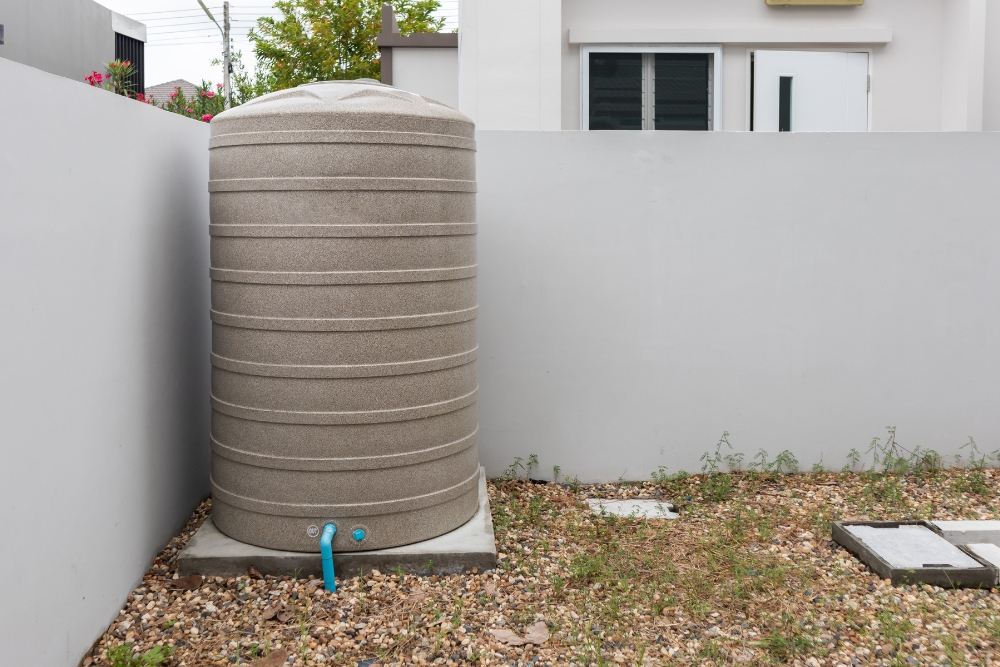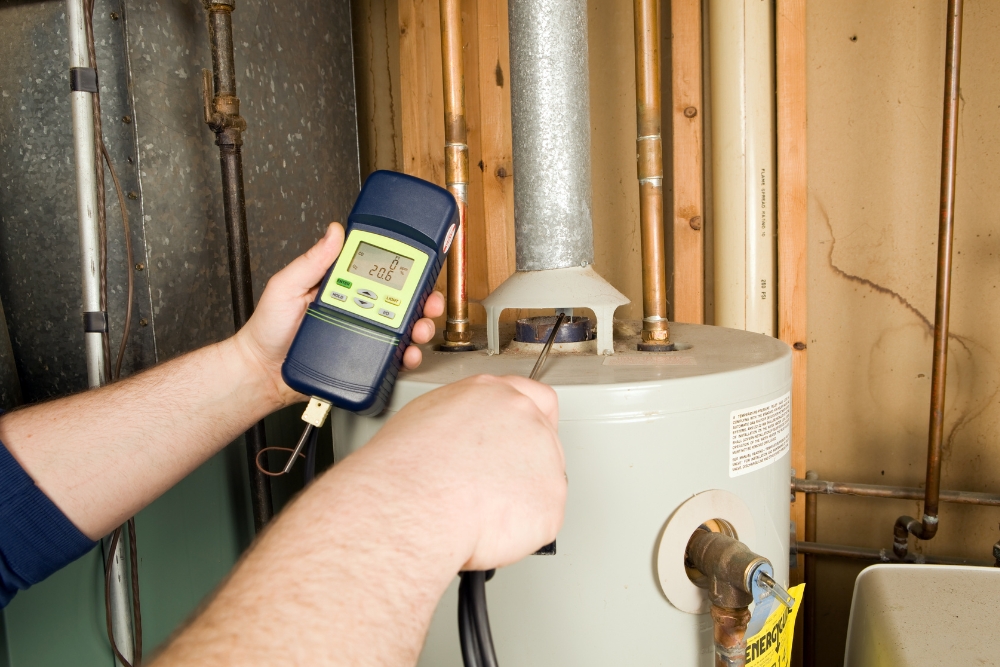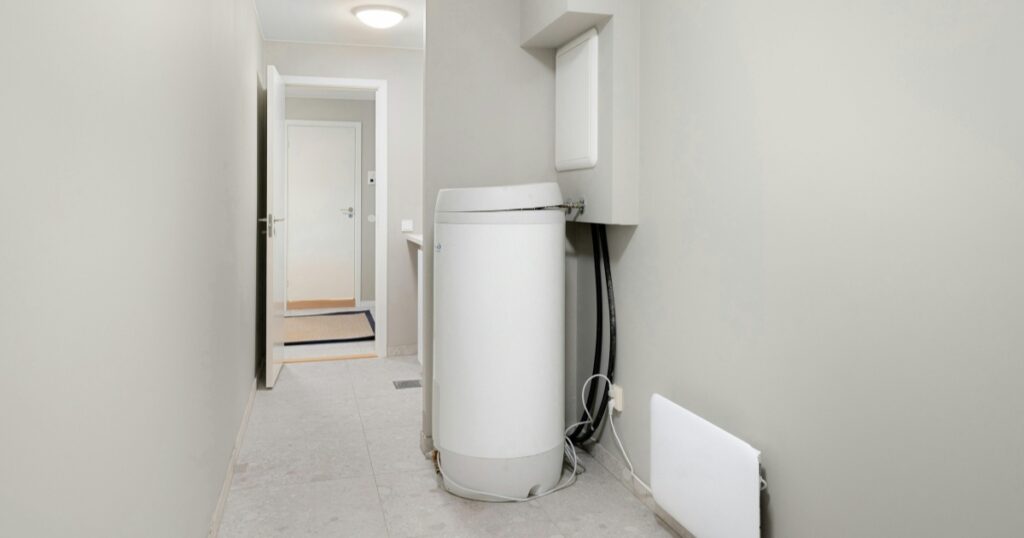Ever found yourself jumping into a shower, only to have it turn on you with a chilly surprise? We know the feeling – battling that sneaky adversary: sediment build-up in our hot water tanks.
It’s no secret that giving your heater a good flush each year is a smart move to send this unwelcome guest packing. Our straightforward guide will clue you in on how to pick up on those telltale signs and clear out the muck, getting your system back to delivering top-notch warmth and efficiency.
So go on then, have a squiz at our tips for maintaining those cosy, steam-filled showers!
Key Takeaways
- Flushing your hot water tank annually is a must-do to clear out sediment and maintain the system’s efficiency.
- Signs of sediment buildup include unusual noises from the tank, lukewarm water, discoloured water, leaks around the valve or cracks in the tank, decreased flow rate and increased energy bills.
- Install a whole-house filter or use a water softener to reduce the mineral content in your supply and protect against future sediment problems.
- Keep an eye on your thermostat settings – 120 degrees Fahrenheit is ideal for preventing bacterial growth without encouraging excessive mineral deposits.
- If you find signs of wear such as leaking valves or cracked tanks, address them immediately; neglect could lead to severe damage or health hazards.
What is Sediment & How Does it Affect Hot Water Tanks?
Sediment in water refers to the solid particles that settle at the bottom of a tank. This buildup can affect hot water tanks by reducing efficiency, causing heating element damage, and shortening the lifespan of the system.

Definition of sediment in water
Sediment in water is what settles at the bottom of our hot water tanks, made up mostly of minerals like calcium and magnesium from hard water. These tiny particles come from our water supply and gather over time, turning into a layer of muck that can cause all sorts of trouble for our heating systems.
We often find this unwelcome buildup displacing water, clogging valves, blocking pipes, and threatening to cut short the life span of our precious hot water tanks.
These sediments aren’t just a nuisance; they’re bad news for efficiency and performance too. If we don’t tackle them head-on by flushing out the tank or using clever dissolving techniques, they’ll keep building up.
This increases the risk of damage and can send energy bills through the roof thanks to reduced heater effectiveness. Next up, let’s delve into how these pesky sediments directly impact your hot water system’s functionality with “Types of sediment.”.
Types of sediment
Sediment in hot water tanks can come from various sources, including minerals and particulates in the water supply. It can consist of:
- Mineral deposits such as calcium and magnesium settle at the bottom of the tank.
- Rust particles that result from corrosion within the tank or pipes.
- Sand, dirt, or debris that enters the tank through the water supply.
Effects of sediment buildup in hot water tanks
Sediment buildup in hot water tanks affects the efficiency and performance of the system. As sediment accumulates at the bottom of the tank, it acts as insulation, preventing the heat from reaching the water effectively.
This leads to increased energy consumption and higher gas or electricity bills. Additionally, sediment can also clog up water lines and cause decreased hot water flow, resulting in inconvenience for homeowners.
Furthermore, sediment accumulation can lead to temperature fluctuations and reduced hot water availability. The build-up can displace water in the tank and potentially block the drain valve, causing leaks or permanent damage to the tank if left unaddressed.
Signs of Sediment Buildup in Your Hot Water Tank
If you’re hearing rumbling, popping, or hissing sounds coming from your hot water tank, it could be a sign of sediment buildup. Additionally, if your hot water is warm but not hot enough or if you notice cloudy or rust-coloured water coming out of the tap, these are also clear indicators that there may be sediment accumulating in your tank.
Rumbling, popping, or hissing sounds
Sediment in your hot water tank can lead to rumbling, popping, or hissing sounds, indicating a potential issue with sediment build-up. These noises are caused by the trapped air bubbles as the water heats up and tries to rise through the sediment layer at the bottom of the tank.
Over time, this build-up can affect your system’s efficiency and even its lifespan.
When you hear these sounds coming from your hot water tank, it’s a clear sign that there is sediment accumulation in your system. This buildup leads to noisy operation and decreased performance, which should prompt you to address the issue promptly with proper maintenance or removal techniques.
Warm but not hot water
When the water from your hot taps is warm but not hot, it could be a sign of sediment buildup in your water heater. Sediment accumulation at the bottom of the tank can insulate the water from the heating element, reducing its ability to reach and maintain high temperatures.
This can lead to lukewarm or tepid water instead of the desired hot water for your daily needs.
Regular flushing of your hot water tank can help prevent sediment buildup and ensure that you continue to enjoy consistently hot showers and a sufficient supply of heated water for various household tasks such as washing dishes or laundry.
Cloudy or rust-coloured water
If you’ve noticed cloudy or rust-coloured water coming from your hot water taps, it could be a sign of sediment buildup in your tank. This murky discolouration is caused by mineral deposits and rust that have settled at the bottom of the tank over time.
As hot water is drawn from the tank, these particles can mix with the water, resulting in its discoloured appearance. Not only is this unappealing, but it also indicates that there may be further sediment accumulation within your hot water system.
To address this issue and ensure clear, clean hot water for your household needs, it’s vital to take action against sediment buildup in your hot water tank. By identifying and eliminating these signs early on, you can prevent potential damage and maintain an efficient hot water system for your home.
Leaking or faulty pressure relief valve
If you notice a leaking or faulty pressure relief valve on your hot water tank, it’s essential to address this issue immediately. A malfunctioning pressure relief valve can lead to an unsafe build-up of pressure inside the tank, increasing the risk of potential damage or even an explosion.
Regularly checking and maintaining the functionality of this valve is crucial in preventing such dangerous situations.
A professional inspection and replacement of the pressure relief valve may be necessary if it is found to be leaking or dysfunctional. Ignoring this issue could result in significant damage to your hot water tank and pose safety risks for you and your household.
Cracks in the tank or connections
If you notice cracks in the tank or connections of your water heater, it is crucial to address these issues promptly. Cracks can lead to leaks and water damage, while faulty connections can cause disruptions in the heating process.
Over time, sediment build-up can put pressure on the tank walls and connections, leading to potential cracking.
Regularly checking for cracks and ensuring tight connections is essential for maintaining your hot water tank’s efficiency and safety. Any signs of damage should be inspected by a professional to prevent any further issues down the line.
Decreased hot water flow
Decreased hot water flow is a common sign of sediment buildup in your hot water tank. When sediment accumulates at the bottom of the tank, it can restrict the flow of water through the system, leading to reduced hot water output.
This decrease in flow can be frustrating and inconvenient, especially during peak usage times when you need a consistent supply of hot water for showers, dishes, or laundry.
To address decreased hot water flow caused by sediment buildup, it’s essential to flush your hot water tank regularly as part of its maintenance routine. Flushing helps to remove built-up sediment and restore proper water flow throughout the system.
Higher gas or electricity bills
When hot water flow decreases, sediment build-up in the tank can lead to higher gas or electricity bills. Sediment makes it harder for the water heater to heat and deliver hot water efficiently.
As a result, the system needs to work harder and use more energy to provide the same amount of hot water, resulting in increased utility costs. Regular maintenance and flushing help prevent sediment accumulation in your hot water tank, maintaining its efficiency and ultimately saving on energy expenses.
Installing a whole house filter or using a water softener can reduce the mineral content in your water supply, minimising sediment accumulation in your hot water tank. By addressing sediment buildup promptly, you can maintain optimal performance from your system while lowering gas or electricity bills over time.
The Dangers of Sediment in Water Heaters
Sediment in water heaters can lead to decreased efficiency and performance, as well as premature tank failure. Additionally, there is the potential for health hazards if the sediment contains harmful bacteria or chemicals.
Decreased efficiency and performance
Sediment accumulating in the hot water tank can affect its efficiency and performance. As sediment settles at the bottom of the tank, it creates a barrier that reduces the heater’s ability to transfer heat to the water effectively.
This leads to increased energy consumption as the system works harder to produce hot water. Additionally, sediment build-up can also cause blockages in pipes and reduce the volume of available hot water, resulting in decreased overall performance.
Furthermore, sediment accumulation can lead to corrosion and damage within the tank itself, further impacting its efficiency. Over time, this may result in a need for premature repairs or replacements if not addressed promptly. Regular maintenance and flushing are crucial for preventing these issues and ensuring optimal performance from your hot water system.
Premature tank failure
Sediment build-up in hot water tanks can lead to premature tank failure. The accumulation of minerals and particulates at the bottom of the tank can cause corrosion, leading to leaks and cracks over time. This ultimately reduces the lifespan of your hot water system, resulting in costly repairs or a full replacement.
If left unaddressed, sediment build-up can also cause overheating and wear out the heating elements faster. Preventing premature tank failure requires regular maintenance, including flushing out sediment from your hot water tank and implementing preventive measures such as installing a sediment filter or using a water softener to minimise mineral deposits.
Potential health hazards
Premature tank failure can lead to dangerous health hazards. Inadequate hot water supply due to sediment accumulation may result in poor hygiene and decreased effectiveness of cleaning products when using the affected water.
Additionally, stagnant water from a malfunctioning water heater poses a risk for bacterial growth, potentially leading to health issues such as skin irritation and infections if used for bathing or washing purposes. Furthermore, the presence of sediments in the hot water can contaminate it with heavy minerals that are not safe for consumption, potentially causing adverse gastrointestinal effects if consumed unknowingly.

Removing Sediment from a Hot Water Tank
To remove sediment from a hot water tank, flushing the tank is the most common method. This involves draining the tank and allowing fresh water to enter, which helps dislodge and remove built-up sediment.
Another method is performing a vinegar soak, where you let the vinegar sit in the tank to break down and dissolve sediment.
Flushing the tank
To remove sediment from your hot water tank, begin by turning off the power supply or gas to the heater. Next, connect a hose to the drain valve at the base of the tank and direct it toward a nearby drain. Then, open a hot water faucet in your home and let it run until you no longer see any air bubbles coming out.
After that, close off the cold water supply valve to the tank and use another hose or bucket to flush out the sediment through the drain valve. Make sure that you keep flushing until clear water comes out of the hose. Once completed, turn on both valves and allow the tank to fill back up before restoring power or gas to your unit.
Performing a vinegar soak
When addressing sediment build-up in hot water tanks, performing a vinegar soak is an effective method to break down and dissolve the accumulation. By simply filling the tank with vinegar and letting it sit for several hours before draining, the acidic properties of vinegar work to dissolve mineral deposits and sediments that have settled at the bottom of the tank.
This process helps maintain the efficiency and extend the lifespan of your hot water system by preventing sediment build-up, ensuring you have access to clean and consistently heated water.
Regularly performing a vinegar soak as part of your hot water system maintenance routine can help prevent premature tank failure caused by sediment accumulation. Additionally, using this DIY solution provides an affordable way to keep your hot water tank free from blockages caused by sediment build-up, which ultimately improves its performance while reducing energy consumption—a win-win for maintaining a reliable supply of hot water throughout your home.
Keeping the tank at the right temperature
To maintain the hot water tank at the right temperature, it is essential to set the thermostat to around 120 degrees Fahrenheit. This temperature is ideal for inhibiting bacterial growth while preventing water from becoming too hot, which can lead to excessive mineral deposits and sediment buildup.
Regularly checking and adjusting the temperature setting ensures that your hot water tank operates efficiently without promoting sediment accumulation, thus prolonging its lifespan and maintaining optimal performance.
By keeping the tank at the appropriate temperature, you also reduce energy consumption, as excessively high temperatures require more energy to heat up and maintain. This simple adjustment not only prevents sediment buildup but also contributes to lower utility bills over time.
Installing a sediment filter
To maintain the optimal performance of your hot water tank, consider installing a sediment filter. This is especially crucial if you live in an area with hard water, which naturally contains heavy minerals like calcium and magnesium that can contribute to sediment build-up.
By adding a sediment filter, you can effectively trap these particles before they accumulate in the tank, ensuring that your hot water system remains free from clogs and blockages caused by sediment.
Installing a sediment filter offers an extra layer of protection for your hot water tank. It helps to prevent potential damage from mineral deposits, maintaining the efficiency of the system and prolonging its lifespan.
Preventing Sediment Buildup in Hot Water Tanks
To prevent sediment buildup in your hot water tank, it’s important to perform regular maintenance and flushing to remove any accumulation. Properly sizing the tank, using a water softener, and installing a whole-house filter can also help prevent sediment from forming in your hot water system.
Regular maintenance and flushing
Regular maintenance and flushing are crucial for preventing sediment build-up in hot water tanks. Flushing the tank annually helps remove accumulated sediment, improving its efficiency and extending its lifespan.
Additionally, regular maintenance ensures that the water heater operates at optimal performance levels, reducing the risk of potential damage due to sediment accumulation.
By undertaking these simple tasks, homeowners can prevent issues such as reduced hot water flow, increased energy bills, and premature tank failure. Furthermore, keeping up with regular maintenance and flushing can also help maintain the quality of hot water by ensuring that sediments do not affect its taste or appearance.
Properly sizing the tank
It’s essential to properly size your hot water tank to meet the household’s hot water demands. A tank that is too small may lead to running out of hot water, especially during peak usage times, while a tank that is too large could result in unnecessary energy expenditure.
Consider the number of people in your household and their typical hot water usage when determining the appropriate tank size. Additionally, take into account any future increases in demand due to renovations or an expanding family.
When selecting a new hot water tank, consult with a professional plumber who can assess your specific needs and recommend the optimal size based on your usage patterns and lifestyle.
Using a water softener
Properly sizing the tank ensures a suitable water supply for your household needs. Additionally, using a water softener can help prevent sediment buildup in hot water tanks by reducing the minerals that contribute to sediment formation.
Water softeners work by replacing calcium and magnesium ions with sodium ions through an ion exchange process, thereby minimising mineral deposits in the tank.
Installing a water softener can effectively reduce hard mineral content in the water, preventing sediment accumulation and extending the lifespan of your hot water system. Regular maintenance, such as flushing and using a water-softening system, can significantly improve the efficiency and longevity of your hot water tank.
Installing a whole house filter
To further enhance the quality of your water and safeguard your hot water tank from sediment accumulation, installing a whole-house filter is an effective solution. This filtration system intercepts sediments present in your water supply before it reach the hot water tank, preventing build-up that can compromise its efficiency and longevity.
By removing impurities such as sand, rust, and debris from all the water entering your home, a whole-house filter ensures cleaner water for daily use and reduces the risk of sediment-related issues in your hot water system.
Another benefit of using a whole house filter is that it helps protect other appliances like dishwashers and washing machines from damage caused by sediment deposits. The installation provides an added layer of protection to prolong the life span of various household devices impacted by mineral accumulations common in hard-water areas.
Have Sediment Buildup Addressed
Preventing sediment buildup in hot water tanks starts with understanding its impact and recognising the signs of trouble. Regular maintenance, such as flushing the tank and installing filters, can help avoid issues down the line.
By being proactive, homeowners can ensure their hot water systems run efficiently and effectively for years to come.






